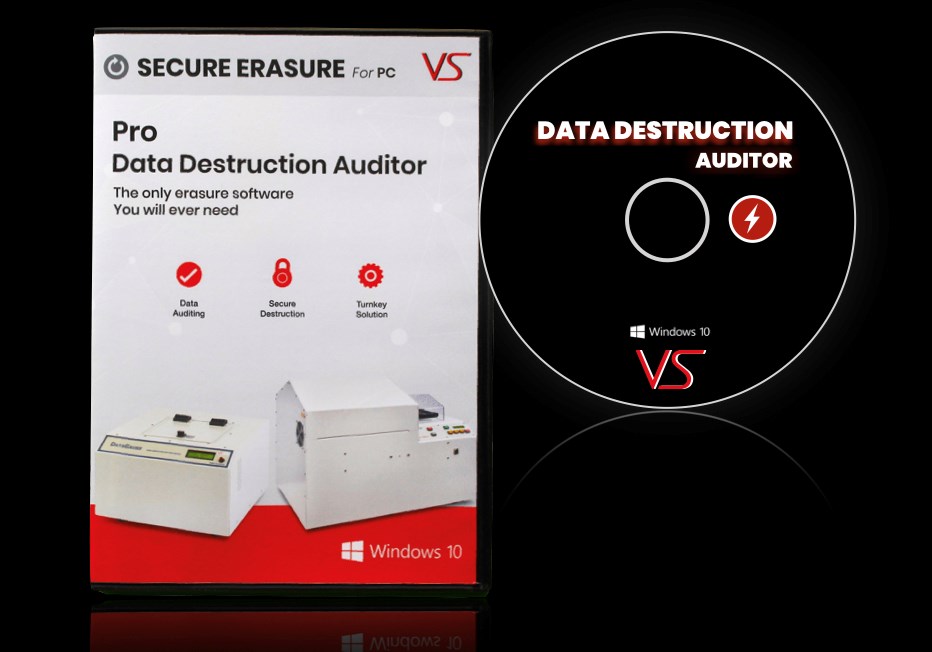Why Data Destruction is an Important Component of Comprehensive Cyber Security
Why Data Destruction is an Important Component of Comprehensive Cyber Security
Blog Article
Just How Correct Data Damage Adds to Robust Computer System Safety And Security Solutions and Mitigates Dangers of Information Violations
In today's electronic landscape, the significance of appropriate data damage can not be overemphasized, as it serves as a fundamental element of extensive computer safety and security solutions. The implications of insufficient data devastation extend past mere conformity; they can greatly influence an organization's cybersecurity stance and online reputation.
Value of Information Destruction
In today's electronic landscape, the significance of data destruction can not be overstated. As companies significantly count on digital possessions, the prospective dangers connected with information breaches and unapproved accessibility amplify. Reliable data devastation is a crucial component of an extensive info safety and security strategy, securing sensitive info from falling right into the hands of malicious actors.
When information is no more needed, simply deleting documents or formatting hard disk drives is inadequate. Recurring information can frequently be recovered making use of readily available tools, presenting considerable risks to both organizations and individuals. This underscores the requirement for robust information destruction practices that guarantee all data is irretrievably removed.
In addition, regulatory conformity mandates, such as GDPR and HIPAA, emphasize the obligation to safeguard sensitive data, including its proper disposal. Non-compliance can bring about serious economic penalties and lawful consequences. data destruction. Hence, integrating reliable information damage procedures not only enhances safety yet likewise fortifies an organization's online reputation and dependability

Techniques of Secure Information Erasure
A number of reliable methods of safe data erasure can be employed to guarantee that sensitive details is completely gotten rid of from storage space tools. One widely recognized approach is data overwriting, which involves changing existing data with random patterns several times. This method significantly lowers the possibilities of data healing, although it may not be effective against sophisticated forensic techniques.

Physical damage is also a trusted method, where storage space gadgets are provided pointless via shredding, squashing, or incineration. This approach ensures that data can not be recovered by any type of methods however requires mindful handling of hazardous products.
Lastly, specialized software program devices designed for safe and secure data erasure provide capabilities that adhere to numerous erasure requirements. These tools frequently consist of attributes like verification procedures to verify successful data damage.
Employing these techniques in combination can enhance information safety and minimize the threats related to information violations, making certain that sensitive info is not unintentionally revealed.
Legal and Compliance Considerations
The approaches utilized for safe data erasure not only offer to shield delicate info but additionally has to straighten with lawful and conformity structures regulating information protection. Organizations are required to comply with different guidelines, such as the General Data Security Policy (GDPR), the Medical Insurance Transportability and Accountability review Act (HIPAA), and the Payment Card Market Information Safety Requirement (PCI DSS) These laws mandate certain methods for data taking care of and damage, guaranteeing that sensitive and individual data is irretrievably eliminated when no more needed.
Failing to adhere to these lawful needs can cause substantial penalties, consisting of penalties and reputational damage. In addition, organizations have to maintain documents of information devastation processes, demonstrating conformity throughout audits or examinations. This paperwork not just secures against lawful repercussions yet additionally reinforces depend on with stakeholders and clients, showcasing a dedication to information safety and security.
Integrating legal and conformity considerations right into information damage methods is vital for any kind of organization. It reduces the risk of information breaches and highlights an aggressive technique to protecting sensitive information, eventually promoting a culture of security and accountability across the organization.
Effect on Cybersecurity Pose
Effective information devastation considerably enhances an organization's cybersecurity posture by lowering the prospective assault surface for cyber dangers. When delicate data is not correctly destroyed, it continues to be accessible to malicious actors who can manipulate this info for unauthorized gain access to, identification theft, or business espionage. By implementing robust data Home Page devastation protocols, organizations can properly lessen the threat of data violations and enhance their overall safety structure.
In addition, the protected disposal of unneeded or obsolete data not just shields sensitive information however also helps companies follow sector policies and standards. Failing to effectively destroy data can result in severe legal effects and reputational damages, more endangering a company's cybersecurity position.

Eventually, prioritizing effective information devastation is important for fostering a robust cybersecurity posture, ensuring that organizations stay vigilant versus progressing cyber dangers while securing their critical assets and stakeholders.
Ideal Practices for Organizations
Executing best practices for information destruction is important for companies aiming to protect sensitive info and minimize cybersecurity dangers. Organizations need to establish a thorough information devastation policy that lays out treatments and obligations. This plan ought to follow pertinent policies, such as GDPR or HIPAA, ensuring lawful consistency.
Secondly, it is important to use accepted data sanitization methods, including data cleaning, degaussing, and physical devastation, tailored to the sort of data and storage medium. Using qualified experts for data devastation services boosts the integrity of these techniques.
Moreover, organizations must preserve a comprehensive supply of all data storage gadgets, guaranteeing that all out-of-date or changed devices goes through destruction. Normal audits of information damage techniques can help boost and recognize weaknesses conformity.
Worker training is an additional important element, as staff has to recognize the value of data devastation and stick to developed protocols. Companies need to record all data damage tasks to give responsibility and traceability, which can be indispensable during audits or in the event of a breach.
Verdict

One extensively recognized strategy is information overwriting, which involves changing existing data with arbitrary patterns numerous times.The approaches used for safe information erasure not only serve to shield sensitive info yet likewise should align with legal and compliance structures governing information security. These policies mandate specific procedures for information managing and destruction, ensuring that personal and delicate information is irretrievably erased when no longer needed.
By executing robust information damage protocols, companies can properly reduce the threat of information breaches and enhance their overall protection structure.
In final thought, correct information devastation is essential for improving computer security services and reducing the threats linked with information violations. - data destruction
Report this page